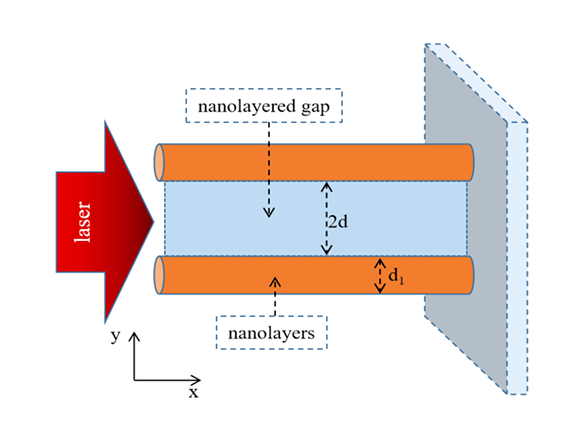The interaction of relativistic laser pulses with nanostructured targets has stimulated considerable interest because of its practical applications in laser-driven particle acceleration, high-brightness ultra-fast hard X-ray, cancer treatment, fast ignition in inertial confinement fusion, etc. Some experimental and simulation results indicate that the interaction of the intense laser pulse with a nanostructured target can significantly increase the production of the high-quality fast electrons and improve the laser energy absorption. The structured targets include nanowire targets, nanostructured "velvet" targets, multihole targets, and nanotubes. Among them, the performance of the nanowire target is very prominent. The nanowire arrays can greatly improve the laser energy absorption and the generation of mega-ampere relativistic electron beams. Experiments and simulations have shown that very strong magnetic fields (about 100 MG) are produced within the nanowire arrays. It is worth noting that the self-generated magnetic field plays an important role in both the production and the transport of the fast electrons. Therefore, it is of great significance to study the generation mechanism of the self-generated magnetic field produced in the nanowire target when a ultra-intense laser pulse interacts with a nanowire target.
The research group led by Prof. Hongbo Cai from the Institute of Applied Physics and Computational Mathematics has established a fully relativistic analytical model of the intensity and distribution of the self-generated magnetic field in the nanolayered target (two dimensional) based on the electron magneto-hydrodynamic description. The research results are published in High Power Laser Science and Engineering, Vol. 8, Issue 2, 2020 (J. M. Tian, H. B. Cai, W. S. Zhang, et al. Generation mechanism of 100 MG magnetic fields in the interaction of ultra-intense laser pulse with nanostructured target[J]. High Power Laser Science and Engineering, 2020, 8(2): 02000e16). The analytical model shows that the self-generated magnetic field originates in the nonparallel density gradient and fast electron current at the interfaces of nanolayered target. And the material has a small effect on the generation of the self-generated magnetic field in the nanolayered target. The 2D-PIC simulation results are in good agreement with the theoretical analysis. This research is of great significance for understanding the role of the structure of the nanolayered target in improving the quality of the energetic electrons and ions accelerated by the ultra-intense laser pulse in the nanolayered target.

Schematic diagram of the nanolayered target


